If you want to design the ideal home office, then this is the article for you. Most people think of an office as a space with walls and a ceiling. But what if you could work from anywhere in the house? The home office has come to be seen as both an important part of productivity and an attractive space for working. Many people work from home, but sometimes it can be tricky to design a home office that’s comfortable, efficient, and aesthetically pleasing.
Creating a home office can be an extremely rewarding experience. With the right layout and design, you can maximize your space and make it easier to get work done. If you’re looking to design an ideal home office, there are a few things to keep in mind. In this article, we’ll show you how to create a functional and stylish home office using some basic tips and tricks.
While designing the ideal home office you need figure out what the space will be used for, what items are need for your work, the office space and layout, all while maintaining organization to enhance your workflow. Additionally, you want to create a space that is customized to your exact personality.
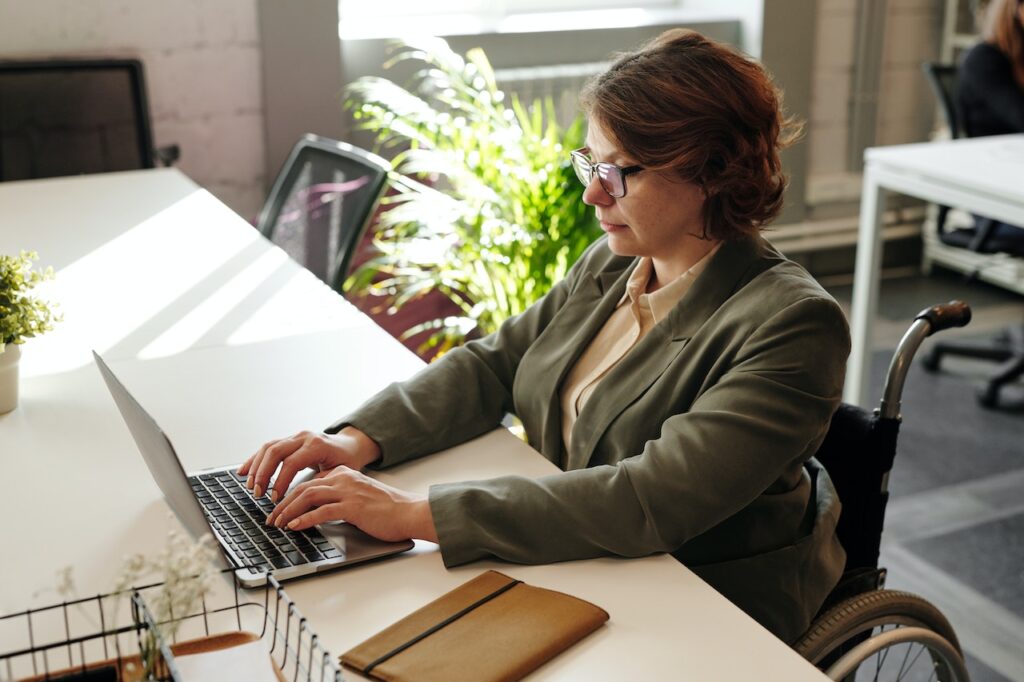
Start by asking yourself the following Questions
1. What is the purpose of the room?
First and foremost to design the ideal home office, it’s important to figure out what you need your office to do for you. Is it to help you stay on top of your work or manage your home life more easily? Do you need a lot of space to draw or to have business meetings. Start by thinking about the purpose of your office – is it for work or pleasure? Once you have a better idea of what you need and want out of the space, it’s easier to think about color, style, and layout.
When it comes to design, there are a few key elements that should be considered first. If your office is primarily for work purposes, it might be best to stick with a more traditional layout with stark lines and limited color. On the other hand, if your goal is to de-stress after a long day at work by taking some time for yourself, go for a more calming space with soft colors. In short, the design will be drastically inspired from the purpose and outcomes you are looking for out of your home office.
Needs and desired
When designing your home office, it’s important to think about what you need and want. Depending on your occupation, you may need a different type of office. For example, if you’re a stay-at-home mom, you might not need an office at all but rather a space that you call your own away from distractions. On the other hand, if you’re an accountant or lawyer, you may need more space and equipment than a home office without a computer can provide.
2. What type of computer do you need? Desktop or mobile laptop?
If you are a web developer or graphic designer than computing power is crucial to your craft. Perhaps a modern laptop is enough for your needs, as mobility may be fairly important to your work, especially if you have a hybrid job.

3. Do you need a separate space for your computer and other equipment, or can everything be housed in one area?
Perhaps you are an architect and you need a space apart from your drawing room and your office at which clients come to meet with you as you present your work. It’s important to appear professional to prospective clients, a separate space may allow you to create the proper boundaries between tasks.
4. How big should your office be?
If you are moving into a new home, this is the best time to consider deeply which room to make into your home office. Sometimes it may be best to change a bedroom into an office space, to have enough space for everything that you need and want out of your home office.
5. What type of lighting is needed?
Some people like warm lights, while others love the pure white LEDs. Figure out which you prefer and than assess how much light you want. I would suggest, adding more lighting than you think, but adding either a dimmer or separate switches for each light source. In this way, you will have more control over how much light is in your home office. So that on those gloomy raining days you can add more light and not need to bring in an extra lamp that doesn’t fit the esthetic.
6. What is needed for work materials, such as paper and pens for storage purposes?
Artists will need large drawers in order to fit their large pieces of paper and all their other art supplies. While a lawyer only needs a pen, a printer, a few highlighters, and a few other things. Their storage needs are vastly different.
7. How many people will be using your home office regularly?
If it’s just for yourself, you may not need as much space as if it’s for a family or group of friends.

In sum, take the time to think about what you need to do your job effectively and design your home office accordingly. It is always worth the investment in time to thoughtfully design a home office. With the answers of these questions answered you can now use them to guide your next decisions while designing your home office:
Home Office Layout
When designing your home office, it’s important to consider the amount of space you’ll need and the layout that works best for you. The layout of the space can determine the amount of time that you spend working and the accessibility all of your materials. You don’t want to be cramped in your space, so make sure to account for a comfortable workspace that’s large enough as a comfortably sized home office.
The layout of the space will determine the amount of time you will want to spend in your home office. You want to create an environment that promotes productivity and encourages yourself to be effective and efficient. In addition to comfort, it’s important to think about how the office will function as an extension of your home. Is it convenient for you to access from across the room? If not, consider designing the office so that you can easily step out from behind your desk when you need to take a break and get a snack (Here are 10 snack ideas).
Materials used
Also, think about how you will access your work materials. Try to place your desk near a door or window so you can easily get up and move around if needed. If you have limited storage space, try to group related materials together on one surface so you won’t have to search through stacks of paper every time you need something.
There are a few things to keep in mind when designing your space.
- How many work stations do you need?
- Do you want a dedicated space for your computer or can you work out of a corner or room?
- How big is your window? Do you need a lot of natural light or would a darker room work better for you?
- How can you optimize lighting? Try using mirrors to bounce light around your space.
- Facing the window or away? Keep in mind that if you are facing away from a window, you may experience monitor glare and will have difficulty seeing your screen.
- How many pieces of furniture will you have? What are the sizes?
- Are there any other spaces in your home that could be used for extra storage?
- You can also look into getting a computer stand or a Hutch to organize all of your cords and devices.
Another consideration in home office layout is how will different pieces of furniture be used in the space? Will you have a desk and chair in one corner, or will you spread out across several areas? You’ll want to make sure that the desk and chairs are comfortable and fit the space well. While you design the ideal home office, planning ahead can help make the space more efficient and organized.
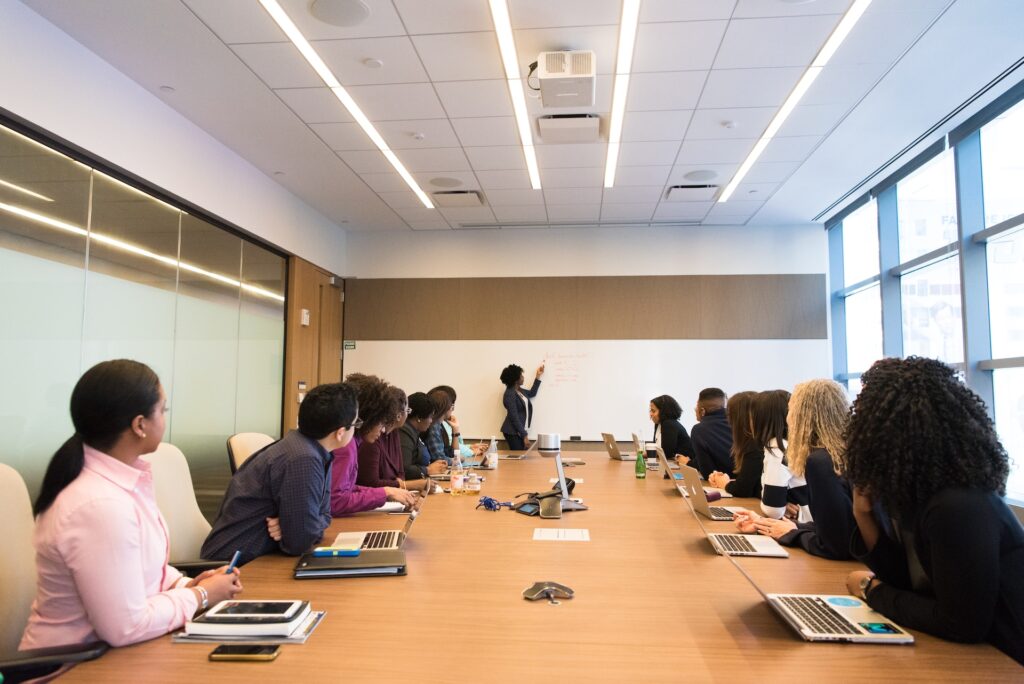
Finally, it’s important to consider cost when designing a home office. Not all spaces are created equal, and some will be more expensive than others. It’s important to find something that fits both your needs and budget, without compromising on quality or function. Once you have an idea of what you want, begin looking for furniture that will fit the bill.
Color Pallet
But first to design the Ideal Home Office, pick a color pallet. use the following website (Coolors) to help you find the ideal colors that coherently fit together. These colors will be used to paint the room, possibly wall paper as an accent wall. In other words, you may decide that one wall will be a green textured printed wallpaper, while the other 3 walls will be a lighter green color. Be creative, but stick to the color pallet. 3-4 colors maximum, don’t over do it.
Once you have selected your desired color pallet then you can begin the process of finding the furniture that you want.
Furniture
When designing a home office, it is important to think about what furniture will work best for the space. Certain pieces of furniture may be more comfortable than others, and they may help you to stay organized. Consider purchasing a home office set or collection, which is a ensemble of a desk, chair, filing cabinet, and or cabinet that are meant to match and fit together in a space.
When choosing furniture for your home office, it is important to think about how you will use the space. If you plan on working primarily from a desk, then you may want to choose a desk that is comfortable and has enough storage space. If you plan on using the space for other activities, such as browsing the internet or working on projects, then you may want to choose furniture that is more versatile. For example, you may want a larger surface area desk if you want to draw on large pieces of paper.
Find Functional Pieces
When choosing furniture for your home office, make sure that it is comfortable and functional. Many people prefer standing desks, because they feel more focused when they are standing up rather than sitting down. However, if you find yourself constantly sitting down, consider purchasing a laptop desk or rolling stand that allows you to work on the go.
Additionally, sitting too long throughout the day affects not only your well-being but also your health. Studies have shown that sitting for prolonged durations can shorten your life, hurts your heart, and even increases your anxiety.
When selecting furniture for your home office, it is important to consider your personal style. Some people prefer sleek and modern pieces, while others prefer classic furniture that they can retrofit to their own style. It is also important to take into account your budgetary restrictions; some cheaper pieces of furniture are just as suitable as more expensive options. Once you’ve got your workspace furniture figured out, it’s time to consider lighting.
Lighting
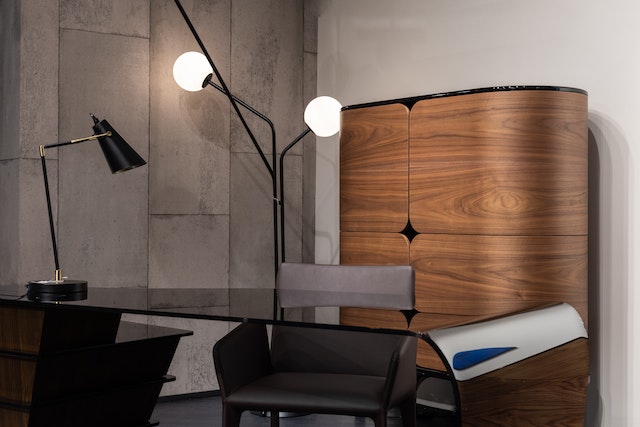
When designing the ideal home office, it is important to make sure that the lighting is perfect for your needs. There are a few things to consider when choosing the right lighting for your space. Too much light can make it difficult to work, while too little can make it difficult to see. Consider whether you need natural light or supplemental lighting (like lamps) for optimum comfort and productivity.
One thing to consider is the type of work you will be doing in your office. If you will be using a lot of light to see what you are working on, then you will need brighter lighting. If you are working in a more controlled environment, like on a computer at night or in the morning, then you can use less light and save electricity.
Another thing to consider is the time of day that you will be working. If it is early in the morning or late at night, bright lights will wake people up and make it difficult to work. You may want to choose softer lighting instead. Make use of natural light – One of the best ways to stay productive is by making use of natural light in your office. If possible, try to have windows that open so you can take advantage of this fresh air.
Add your Personal Flare
Finally, you should consider your personal style when choosing lighting for your home office. Some people like bright lights while others prefer softer light. You should figure out what works best for you and choose what you think looks best. Some may like modern designs, and others may prefer a cozy vibe and decorate accordingly.
I would recommend to add too much lighting and then reduce from that point based on the scenario. Moreover, add dimmers and dimmable to the lights then you can truly adjust the lighting to all situation and conditions.
Electronics
When you’re designing your home office, you’ll want to take into consideration the types of electronics you’ll be using. Here are a few things to keep in mind:
- Make sure there’s enough power available. Your design ideal home office may need an outlet for your laptop. A surge protector for your computer, and Wi-Fi dongles for your devices.
- Consider cable management, there are many products available that can aid in cleanly and neatly.
- Consider how you’ll get around. Perhaps you’ll need a rolling desk or a studio setup with movable walls. So that you can easily move around the room, take this into account while routing your cables.
- Include a TV screen on a wall to put up videos and presentations on a larger screen.
- Have multiple monitors to optimize your screen space and layout of tabs. Have larger web pages which to reduce the need to switch between tabs.
- Have a tablet to have mobility with some of your tasks.
- Think about a projector instead of a TV screen. You can get a mobile projector for around 100$ which can be used for a movie night as well.
Keep in mind where electrical sockets are so that you can to optimize your layout to reach all of them. A power strip will make quick work of adding electrical sockets. Just ensure that you won’t blow a breaker by having too many things plugged into a single socket.
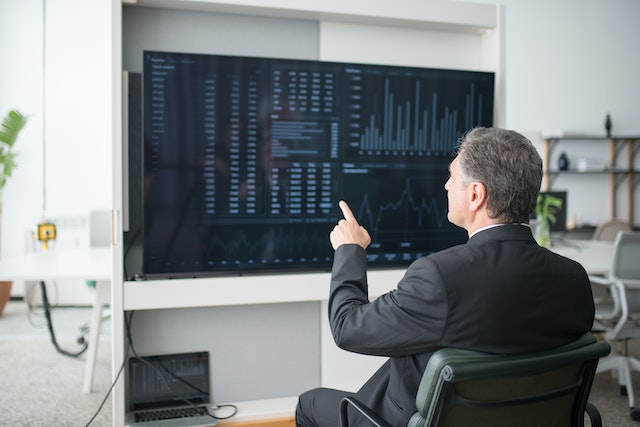
Decorating your designed ideal home office
Decorating is a must for any home office. You may think decorating a useless way of spending money. However, decorating truly completes any room, especially one that you will be spending so much time in. To create a relaxing environment, consider investing in some artwork or plants in your home office. Not only will these items add personality to your space, but will also align your mindset after a long day of work. If you are trying to remain on budget then try these inexpensive decorating ideas.
A home office is a great way to both improve your productivity and feel more connected to your surroundings. But before you start decorating, there are a few things you should think about
Organizing Your Office
When designing your Ideal Home Office, it is important to make sure that the space is organized and easy to use. Some considerations for designing a home office include:
- Designing an ideal home office that is functional and organized.
- Creating a work area that is comfortable and conducive to productivity.
- Creating storage solutions for materials and gear.
- Creating a space that can easily transition from one activity to another.
When it comes to creating an organized home office, it can be difficult to know where to start. It can be tempting to try and cram everything into one space, but this is not the best way. Create a space for every item that is necessary on a daily basis. Put your rarely used items in a drawers, it’s easier to manage this way, rather than being all different locations.
Keep in mind that storage doesn’t need to be an ugly addition to your space. Here are a few ways to adding storage yet still adding a stylistic touch to your home office.
Choose your seat wisely. If you’re seated in front of a computer all day, then ensure your chair is comfortable with good back support. If you’re using a desk, make sure it has storage potential to keep all your tools nearby. Instead, try to create separate areas for working on specific projects or tasks.
From properly designing your ideal home office, this will help you stay focused and increase your efficiency.
Here are some tips on how to design the ideal home office:
– Keep clutter to a minimum – When it comes to your home office, make sure everything is clean and organized. Try not to have too many things lying around on your desk or shelves, as this will only create chaos.
– Take advantage of storage options – If you don’t have a lot of room in your home office, take advantage of storage solutions like cabinets or filing cabinets. This will help you organize everything quickly and easily.
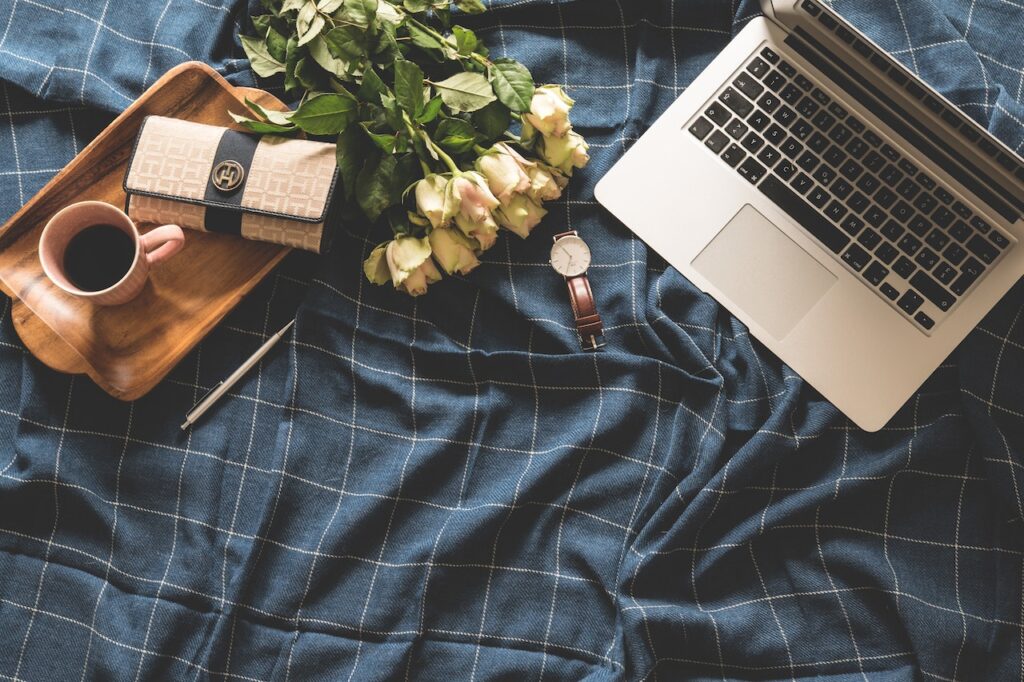
Working from Home Advice
Working from home sounds like the perfect solution. You can work from anywhere in the world, and you don’t have to spend money on commuting. But is working from home actually a productivity boost?
The short answer is yes, working from home can increase your productivity. Here are a few tips on how to set up your work from home office:
1. Get organized. One of the biggest challenges when working from home is staying organized. You need to be able to find whatever you need quickly and easily, and avid wasting time searching for items. To stay organized, start by creating designated areas for your work files, emails, and other materials.
2. Use technology to your advantage. One of the benefits of working from home is that you can use technology to stay productive. If you have a computer with internet, then keep track of your work progress and stay up-to-date on developments in your field. You can also use online tools to organize and track your tasks.
3. Set boundaries. One common problem with working from home is that people tend to work themselves too.
Design the Ideal Home Office Workflow
Creating a home office workflow is essential for productivity. By following these simple tips, you can create an efficient space that promotes creativity and productivity.
Create an environment that is conducive to work. Keep your home office tidy and organized so you can focus on your work. If you have a separate room to design the Ideal Home Office, make sure to decorate it accordingly. If not, use organizers and shelving to keep your desk area neat and organized.
Invest in the right tools. It’s important to have the right tools for the job in order to be productive. Purchase a computer with adequate storage and RAM, a printer, copier, scanner, and other necessary office supplies. Having the right tool for the job will drastically enhance your productivity and motivation to work.
Get organized; Create folders on your computer for different tasks, such as work-related files, client files, project files, etc. This will help you stay organized and minimize clutter on your desk.
Take breaks frequently. A break will help you refresh and refocus on your work. Allow yourself 15 minutes every hour to take a break and step away from your desk. When working in an environment with distractions, it may be difficult to remain focused for long periods of time.
Conclusion
If you’re like most people, then your home office is one of the rooms in your house that you can’t spare time or money to decorate. But don’t let that stop you from making it look nice and more importantly your own!
in short, here are some tips on how to design your home office:
First, make sure the space is well-lit and free from distractions. Choose a light fixture that will highlight your work instead of casting shadows. Place plants in close proximity to your work area to provide a sense of calm and peace.
Next, make sure the furniture is comfortable and versatile. For example, choose an adjustable chair and a desk that is large enough for all desired purposes















